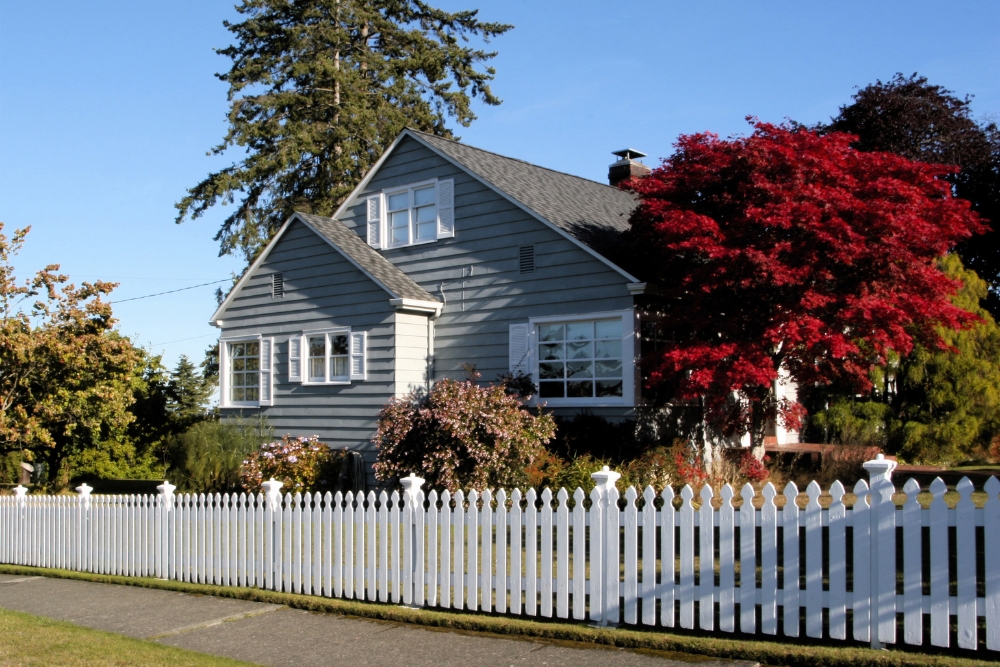Fences play an important role in protecting and securing your property, so it's necessary to understand what type of coverage you have in case of accidental damage or destruction. In this article, we will explore the coverage of fences under standard homeowners insurance policies, what type of damage is typically covered, and what situations might lead to an exclusion.
Type of Protection Homeowners Insurance Offers for Fences
The coverage for fences is usually included in the "other structures" portion of a standard homeowners insurance policy, which protects structures on your property that are not attached to the main dwelling, such as sheds, garages, and fences. However, you must consult your insurance agent to ensure this coverage.
Homeowners insurance typically covers damage to fences if the damage is caused by a covered event, such as:
- Storms: Damage caused by winds, hail, lightning, and other storm damage are typically covered by homeowners insurance.
- Fire: Fire damage is typically covered by homeowners insurance, whether a wildfire, a house fire, or any other type of fire causes it.
- Vandalism: Damages caused by vandalism, such as graffiti, broken windows, or other intentional damage, are typically covered by homeowners insurance.
- Falling objects: Damages caused by falling objects, such as trees, are typically covered by homeowners insurance.
Exclusions in Homeowners Insurance for Fence Damage
Fence damage may not be covered by homeowners insurance in certain situations. Here are some examples:
- Normal wear and tear: If the fence is old and has deteriorated over time due to normal wear and tear, it may not be covered by your insurance policy.
- Lack of maintenance: If the damage is caused by neglect, such as not properly maintaining the fence, it may not be covered by your insurance policy.
- Damage caused by animals: If the damage is caused by animals, such as termites or woodpeckers, it may not be covered under a standard homeowners insurance policy.
- Damage caused by neighbors: If a neighbor causes the damage, it might not be covered by insurance and it's vital to address the issue with the neighbor directly.
A Guide to Filing a Claim
Filing a fence damage insurance claim typically involves the following steps:
- Before filing a claim, review your homeowners insurance policy to confirm that the damage is covered and understand the limits of your coverage.
- Take pictures or videos of the damage and list the items that need to be repaired or replaced. Also, make a note of the date of the damage.
- Contact your insurance company as soon as possible after the damage occurs. They will provide you with a claim number and an adjuster will be assigned to your case.
- Provide your insurance company with documentation of the damage, such as pictures, videos, and a list of items that need to be repaired or replaced.
- The insurance company will schedule an inspection of the damage with an adjuster, who will assess the damage and provide an estimate for the repairs.
- Review the estimate provided by the adjuster, and if you agree with the estimate, authorize the repairs.
- Once you authorize the repairs, the insurance company will pay the contractor directly or issue a check.
- Keep track of any additional expenses you incur due to the damage, such as temporary fencing or hotel expenses if you need to temporarily relocate.
Reach Out to John E. Peakes Insurance Agency to Secure Coverage for Your Fence!
Confused about whether your fence is part of your insurance? Make sure you’re fully protected with our homeowners insurance that is tailored to meet your specific needs. Our team of experts at John E. Peakes Insurance Agency is available to answer any questions. Contact us today to get started with your fence coverage.
Contact Us


